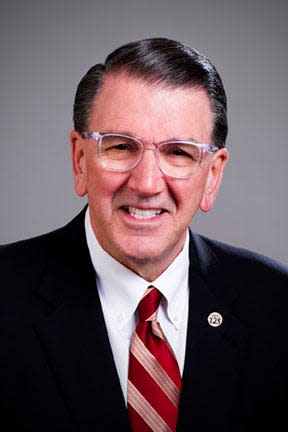Wendler commentary: Why is public higher education important?
I frequently challenge public higher education. I am occasionally cynical. Even critical. Not today. The impact of public universities on economic progress varies widely by the specific institution, and the economic sector being considered. But, almost every university contributes to economic progress. Research and innovation drive competitive federal and state funding. Research and service projects can lead to significant technological advancement and far-reaching benefits, according to David Rosowsky.
Public universities typically offer a broad range of programs and respond to student aspirations creating the benefits of scale and contributing to workforce development on the local level and beyond in various sectors. Public institutions are major economic engines in their regions, nurturing and employing people with a range of skills and abilities and attracting businesses to utilize those skills and insight for economic progress. Accessible education leads to greater socio-economic mobility. Such accessibility is crucial for long-term economic stability and growth. Partnerships with industry drive practical innovation. In the regional context of West Texas A&M University, all of these forces are in play and add to the economic vitality of the Panhandle. An economic impact study by Emsi, a labor and analytics firm, found that WT as an economic engine led to a $747.3 million total impact and supported 12,225 jobs. One out of every 23 jobs in the Panhandle is supported by WT and its students, with a whopping $2.4 billion total benefit to society. These facts alone are noteworthy, but there are other benefits.

Public higher education institutions typically offer lower tuition rates compared to private institutions. Higher education becomes more accessible to a broader range of students. The Economist reports that post-secondary education is a key driver of social mobility. It provides individuals with the knowledge and skills necessary to improve their socio-economic status. Such advancements improve opportunities for individuals and families. The trajectory of people's lives and families, including the communities they live in, are often transformed. Public higher education correlates with higher levels of civic engagement, according to The Hill Institute, leading to greater involvement in community and civic activities, promoting reflection, responsibility, productive citizenship and leadership.
Public universities amplify and contribute to the cultural richness of our society. Arts programs, public lectures and cultural events are accessible not just to students but to the wider community, especially through quality programs in music, theater and numerous other engagements that enrich community life in ways not always easily measured, but undeniably present. One example is the Sybil B. Harrington College of Fine Arts and Humanities at West Texas A&M University. Overall, public higher education is vital for fostering an informed, skilled and cohesive society. It not only benefits the individuals who receive education but also enhances the collective wellbeing of the community and state. These powerful forces work to make public higher education important to any region in our state or nation, and vital to our service in the Texas Panhandle.
These influences and results led to the development of the Servicemen's Readjustment Act (1944), commonly known as the GI Bill. On September 16, 2023, I noted this in a reflection on vouchers: "Ed Humes, a journalist with a Pulitzer Prize in his back pocket, observed in a CBS News commentary: 'Really, the cold warriors were educated on the GI Bill. They used different weapons. They had the drafting table instead of the draft board. They used their new skills to later take us to the moon. GI Bill guys were behind that. Same with the Internet, with the invention of computers. You can trace back much of what's good in America today to the skills and the prosperity that the GI Bill brought to this generation.'" If you are reading this on a smartphone or tablet, you might want to thank a veteran who took advantage of the voucher program. While many question government spending on nearly everything, the impact of educating veterans who chose where and what to study is a beautiful investment in America's future. During one period, for every dollar invested into veterans' education, $7 was returned. The greatest portion of this investment was in public higher education. Many veterans returned to WT to enhance the trajectory of their lives for themselves, their family and their community.
Public funds in support of public institutions is a powerful idea when responsibly choreographed. That idea is expressed in WT 125: From the Panhandle to the World, "The University's relationship to its community is critical. Schools, industries, businesses and cultural activities all play a pivotal role in building a quality place to live and study. This is a mutually reinforcing phenomenon."
And that's why public higher education is important.
Walter V. Wendler, President of West Texas A&M University. His weekly columns, with hyperlinks, are available at https://walterwendler.com/.
This article originally appeared on Amarillo Globe-News: Wendler commentary: Why is public higher education important?
